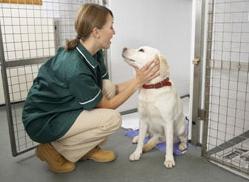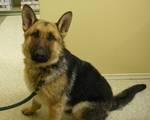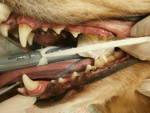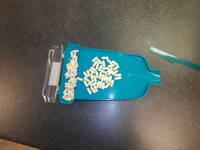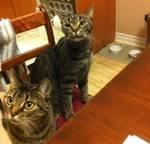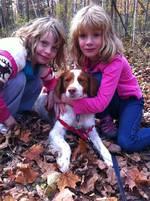
Nowadays, we are all looking for ways to save money wherever we can. Here at Mitchell Veterinary Services, we have come up with some very easy ways to save money on pet care. Following these tips can easily save you hundreds to thousands of dollars!
- See your veterinarian regularly. Annual health exams are very important in maintaining your pet’s health. This allows your veterinarian to catch problems early or notice that something may become a problem in the near future. By preventing issues or catching them early, it will save costs on potentially expensive treatments later on. Senior pets should see a veterinarian twice a year as problems can develop faster as they get older.
- Keep your pets a healthy weight. Obesity is becoming a large problem in our pets and can cause a variety of issues. These issues range from diabetes, orthopedic problems such as arthritis and torn knee ligaments and increased risks for going under anesthesia. The costs of treating these issues can be quite substantial compared to the low cost of keeping your pet a healthy weight. Your veterinary team can help develop a weight loss plan for your pet if needed.
- Focus on oral health. Dental health is an important aspect of your pet’s health. Dental disease has been linked to various issues such as kidney and heart disease. Brushing your pet’s teeth is the best way to prevent dental disease. There are also veterinary specific diets that have been proven to reduce plaque and gingivitis. Regular dental cleanings with your veterinarian is also important, as these will keep your pet’s gums and teeth healthy. Ignoring your pet’s dental health can mean dental pain and eventually expensive dental surgery with multiple tooth extractions.
- Feed your pet a healthy diet. Diet is important for living a long and healthy life. Certain breeds are prone to certain disorders so it is important to speak with your veterinarian about what diet would be best for your specific pet. There is no one diet suited to all pets. Cats should be fed a high protein, low carbohydrate canned food diet with very little kibble to help prevent urinary issues and obesity.
- Consider pet insurance. Pet insurance can cover costs associated with many illnesses and injuries. Unfortunately, in an emergency, costs can add up quickly. Pet insurance in these cases can mean the difference between life and death for your pet. Depending on your coverage, pet insurance may also cover annual vet care costs.
- Spay or neuter your pet. Spaying or neutering your pet at a young age can prevent costly emergency surgeries in the future. Females can get a deadly infection in their uterus called “pyometra” that can only be treated by surgery. Other issues that can arise include certain types of cancers, emergency C-sections and unwanted puppies or kittens. Spaying or neutering your pet at an early age costs a lot less than dealing with emergencies and illnesses in the future that could have been prevented.
- Keep your cat indoors. Keeping your cat as an indoor cat will significantly expand its lifespan, as well as save you money. Outdoor cats are at risk of getting hit by a car, poisoning, attack by wildlife, cat fights, infectious diseases from other cats such as Feline Leukemia and Feline Aids (FIV). Outdoor cats will also have the added costs of extra flea treatments, deworming, and additional vaccines.
- Consider the breed before adopting. Before purchasing or adopting a dog, consider the breed. Large breed dogs will generally cost more in regular care (food, toys, medications, surgery, etc.). Certain breeds require regular grooming that will add to yearly costs. Furthermore, certain breeds are prone to certain health conditions, so make sure to prepare for that. Consider your lifestyle as well. If you work long hours, avoid getting a very active dog that will require dog walkers to come exercise. Adopting a puppy will cost more than adopting an adult dog as they require training, monthly vet visits, and surgery.
For more information on any of our tips ask our team at Mitchell Veterinary Services.




